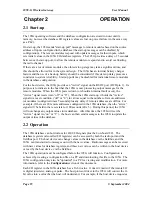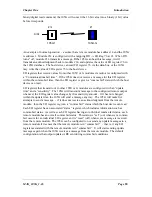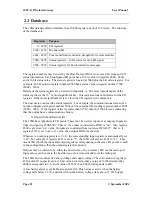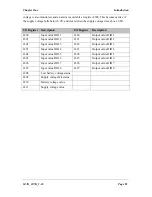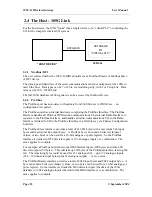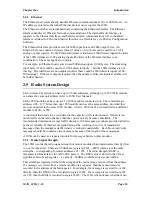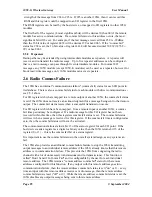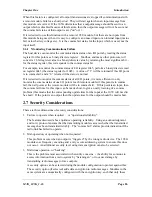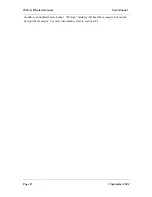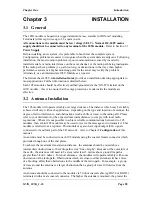
Chapter One
Introduction
MAN_105G_1.16
Page 12
byte can be 8 discrete inputs or outputs, but analog or pulse I/O take up 1 byte for low
resolution values (8-bit) or 2 bytes for high resolution values (16-bit).
An “output” is a value coming into the 105G via the fieldbus. An input is a value going out
from the 105G via the fieldbus.
So an Ethernet 105G can handle up to 4300 I/O total, but analog or pulse inputs are limited
to 2048 x 8-bit values or 1024 x 16-bit values. The same limit applies to outputs.
For example, an Ethernet 105G can handle 2000 discrete inputs and 500 analog inputs
(assume analogs are 16-bit). The number of input bytes is 1250 (2000/8 + 500*2). The
same unit could handle 4000 discrete outputs and 750 analog outputs. The number of output
bytes is 2000 (4000/8 + 750*2). The total number of I/O is 3250 which is less than the total
limit of 4300.
1.1.4
DeviceNet 105G
The DeviceNet 105G provides DeviceNet 2.0 Slave functionality. DeviceNet is an
automation fieldbus developed by Allen-Bradley (Rockwell Automation).
The DeviceNet connection on the 105G is optically isolated RS422 with selectable baudrate
between 125 and 500 Kbit/sec.
The 105G I/O database has 4300 registers (each of 16 bit value), however the DeviceNet
interface only supports 512 x 8 bit input bytes and 512 x 8 bit output bytes, and this limits
the amount of I/O that can be transferred via the DeviceNet port.
Each byte can represent 8 discrete inputs or outputs, or an 8-bit value, or two bytes can
represent a 16-bit value. That is, analog or pulse I/O can be transferred as 8-bit registers (1
byte) or 16-bit registers (2 consecutive bytes).
An “output” is a value coming into the 105G via the fieldbus (that is, a value written to the
105G from the DeviceNet master). An input is a value going out from the 105G via the
fieldbus (a value read by the DeviceNet master).
So a DeviceNet 105G can normally handle up to 4096 (512 x 8) discrete inputs or 512 low
resolution analog inputs or 256 (512 x ½) high resolution analog inputs, or some combination
in between. It can also handle the same number of outputs, however the total I/O count
cannot exceed the 105G database size of 4300.
1.1.5
Modbus Plus 105G
The Modbus Plus 105G provides Modbus Plus Slave functionality. The Modbus Plus
connection on the 105G is optically isolated RS485 with standard baudrate of 1 Mbit/sec.
The 105G I/O database has 4300 registers (each of 16 bit value), however the Modbus Plus
interface only supports 1024 input registers and maximum 1024 output registers. Each
register can be 16 discrete inputs or outputs, or one analog or counter 16-bit value.
An “output” is a value coming into the 105G via the fieldbus. An input is a value going out
from the 105G via the fieldbus.
So an Modbus Plus 105G can handle up to 4300 I/O total, but analog or pulse inputs are
limited to 1024 x 16-bit values. The same limit applies to outputs.
The Modbus Plus interface allows global data base transactions with routing for up to six
Modbus Plus networks.

















